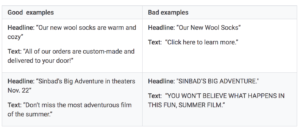People may be clicking, but when are they buying? Are consumers buying too much too fast? When do they really decide to convert and make a purchase? When will brick and mortar stores reopen and foot traffic resume? As some questions are answered, they are replaced by new questions under such fast-changing circumstances. The good news: Search marketing is adaptable, measurable, and when done correctly, VERY cost effective. Even with shifting data models, PPC pros can use timely trends to guide strategic decisions.
Trends Emerging
One very helpful tool for marketers during COVID-19 is the Tinuiti COVID dashboard. Here they provide a look at trends in paid Facebook media since the pandemic took hold. It requires you to sign up for free with email, and offers insights into media spend. They have discovered some emerging trends from the data across some volatile sectors. April proved far different compared to March; May will undoubtedly look far different compared to April. The following trends, according to the data shared by Search Engine Land:
Automotive: Spending plunged month over month by 41%, but surged almost 50% week over week across the past two weeks.
Travel: Spend almost evaporated, down 82% month over month, but is showing signs of a cautious uptick.
Consumer packaged goods: Up 27% month over month, and up 50% week over week.
In some cases, it seems that the natural reaction is to slash media spend. But clear thinking and data prove to prevail while figuring out the best strategies for your company.
E-commerce
Fast impact on e-commerce is dizzying to say the least, since e-commerce covers basically everything on the market.
- Google announced search results on the Google Shopping tab will now include free listings, so any business that sells things should fast-track getting their Merchant Feed into Google. Read more about this hot topic on our news page here.
- Product hoarding has shifted to “next best alternative” purchasing. For example, consumers got creative about toilet paper shortages, driving interest in bidets and other solutions-oriented products.
- Market-dominating providers are suddenly prioritizing what gets shipped and when. Smaller providers that can ship fast have the potential for an edge over Amazon, Walmart and other large companies.
Here are some PPC tips from Onimod Global:
- Make sure you are only showing the ads for things people can actually buy. There’s no point showing ads for toilet paper if none is in stock, or for your new summer shoe line launch if your warehouse is on lockdown.
- Pay attention to setting better bids and prioritize the campaigns that can still convert.
Home services
Quarantine has people searching around the house looking for anything and everything to fix up. This includes but not limited to: Carpet cleaning, painting, dusty air ducts, spring prep for outdoors. Some are DIY projects, but many are best handled by the professionals, including emergency repairs.
Onimod Global’s PPC tips:
- Stay on top geo-based performance that is affected by any local regulations impacting performance in your service areas.
- There’s no point showing ads when all you can do is disappoint a prospect with the inability to fix their problem soon. Ensure your ads are suspended while your limited staff is completely booked.
Hospitality
It’s very evident as to why spend in the hospitality industry is almost completely evaporated. Remember that this is only temporary! History tells us that people will venture back out. It is human nature to do so. Travel is a necessary escape, and essential for business at times. People need hope, that they will soon be able to do this again. Here are our tips:
- Stay on top of shifting search queries to avoid paying for ad clicks from consumers looking to cancel.
- Keep audiences for Google Ads up-to-date with your customer/prospects database. This will ensure you’re showing the most relevant ads at the right time to the right groups of consumers.
- Remember that there are customers who are ready to buy, just maybe unable to because of local restrictions. We suggest to consider shifting away from last-click conversion attribution.
Local brick & mortar businesses
Most likely the largest impacted in business are the brick and mortar businesses forced to close for the near future. Family-owned restaurants may lack infrastructure for delivery services at scale.
Some tips from Onimod Global for PPC are:
- Build audiences from customer data. Even your manual customer email list in Google Sheets can be uploaded to a Facebook campaign for more effective targeting.
- Agencies can deploy Rule Engine (for Google and Bing) to automate optimizations. It’s another way to offer lower-cost agency services that can scale.
- If you’re new to social media advertising, contact Onimod Global to ensure your advertising budget is spent in the most efficient way possible.
More from Onimod Global
Need help from experts on PPC and how to optimize your advertising budget? Contact Onimod Global today, we are here to help you navigate this uncertain time. To find out more about who we are and what we do, click here.
To catch up on the latest digital marketing news and trends, click here.


